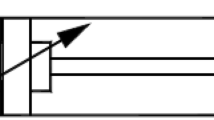Abstract
Reverse Vending Machines (RVMs) are a proven instrument for facilitating closed-loop plastic packaging recycling. A good customer experience at the RVM is crucial for a further proliferation of this technology. Bin full events are the major reason for Reverse Vending Machine (RVM) downtime at the world leader in the RVM market. The paper at hand develops and evaluates an approach based on machine learning and statistical approximation to foresee bin full events and, thus increase uptime of RVMs. Our approach relies on forecasting the hourly time series of returned beverage containers at a given RVM. We contribute by developing and evaluating an approach for hourly forecasts in a retail setting – this combination of application domain and forecast granularity is novel. A trace-driven simulation confirms that the forecasting-based approach leads to less downtime and costs than naïve emptying strategies.
Access this chapter
Tax calculation will be finalised at checkout
Purchases are for personal use only
Similar content being viewed by others
References
Ellen MacArthur Foundation: The New Plastics Economy - Rethinking the future of plastics (2016)
Waste Management Review: NSW litter reduced by a third with help from Return and Earn. http://wastemanagementreview.com.au/nsw-litter-reduce-third/
Taylor, S.: Waiting for service: the relationship between delays and evaluations of service. J. Mark. 58, 56 (1994)
TOMRA System ASA: Key Facts. https://www.tomra.com/en/news-and-media/key-facts
Hevner, A.R., March, S.T., Park, J., Ram, S.: Design science in information systems research. MIS Q. 28, 75–105 (2004)
Peffers, K., Tuunanen, T., Rothenberger, M., Chatterjee, S.: A design science research methodology for information systems research. J. Manag. Inf. Syst. 24, 45–77 (2007)
March, S.T., Smith, G.F.: Design and natural science research on information technology. Decis. Support Syst. 15, 251–266 (1995)
Gregor, S., Jones, D.: The anatomy of a design theory. J. Assoc. Inf. Syst. 8, 312–335 (2007)
Hyndman, R.J., Athanasopoulos, G.: Forecasting: Principles and Practice, 2nd edn. OTexts, Melbourne (2018). OTexts.com/fpp2
Aburto, L., Weber, R.: Improved supply chain management based on hybrid demand forecasts. Appl. Soft Comput. J. 7, 136–144 (2007)
Weron, R.: Electricity price forecasting: a review of the state-of-the-art with a look into the future. Int. J. Forecast. 30, 1030–1081 (2014)
Friedman, J.H.: Greedy function approximation: a gradient boosting machine. Ann. Stat. 29, 1189–1232 (2001)
Bergmeir, C., Benítez, J.M.: On the use of cross-validation for time series predictor evaluation. Inf. Sci. (NY) 191, 192–213 (2012)
Peffers, K., Rothenberger, M., Tuunanen, T., Vaezi, R.: Design science research evaluation. In: Proceedings of the 7th International Conference on Design Science Research in Information Systems: Advances in Theory and Practice, pp. 398–410 (2012)
Hasin, M.A.A., Ghosh, S., Shareef, M.A.: An ANN approach to demand forecasting in retail trade in Bangladesh. Int. J. Trade Econ. Finance 2, 154–160 (2011)
Taylor, J.W.: Forecasting daily supermarket sales using exponentially weighted quantile regression. Eur. J. Oper. Res. 178, 154–167 (2007)
Thiesing, F.M., Vornberger, O.: Sales forecasting using neural networks. In: International Conference on Neural Networks, pp. 2125–2128 (1997)
Kim, K.J.: Financial time series forecasting using support vector machines. Neurocomputing 55, 307–319 (2003)
Wang, J.J., Wang, J.Z., Zhang, Z.G., Guo, S.P.: Stock index forecasting based on a hybrid model. Omega 40, 758–766 (2012)
Sfetsos, A.: A comparison of various forecasting techniques applied to mean hourly wind speed series. Renew. Energy 21, 23–35 (2000)
Sfetsos, A., Coonick, A.H.: Univariate and multivariate forecasting of hourly radiation with artificial intelligence techniques. Sol. Energy 68, 169–178 (2000)
Li, Y., Zheng, Y., Zhang, H., Chen, L.: Traffic prediction in a bike-sharing system. In: Proceedings of the 23rd SIGSPATIAL International Conference on Advanced Geographic Information Systems - GIS 2015, pp. 1–10 (2015)
Fan, S., Chen, L.: Short-term load forecasting based on an adaptive hybrid method. Power Syst. IEEE Trans. 21, 392–401 (2006)
Crespo Cuaresma, J., Hlouskova, J., Kossmeier, S., Obersteiner, M.: Forecasting electricity spot-prices using linear univariate time-series models. Appl. Energy 77, 87–106 (2004)
Kristiansen, T.: Forecasting Nord Pool day-ahead prices with an autoregressive model. Energy Policy 49, 328–332 (2012)
Murray, K.B., Di Muro, F., Finn, A., Popkowski Leszczyc, P.: The effect of weather on consumer spending. J. Retail. Consum. Serv. 17, 512–520 (2010)
Parsons, A.G.: The association between daily weather and daily shopping patterns. Australas. Mark. J. 9, 78–84 (2001)
Gutierrez, R.S., Solis, A.O., Mukhopadhyay, S.: Lumpy demand forecasting using neural networks. Int. J. Prod. Econ. 111, 409–420 (2008)
Chopra, S., Meindl, P.: Supply Chain Management: Strategy, Planning, and Operation. Pearson Education, Inc., London (2007)
Ghobbar, A.A., Friend, C.H.: Evaluation of forecasting methods for intermittent parts demand in the field of aviation: a predictive model. Comput. Oper. Res. 30, 2097–2114 (2003)
Brockwell, P.J., Davis, R.A.: Introduction to Time Series and Forecasting (2016)
Kaggle Inc.: Kaggle. https://www.kaggle.com
Gross, C.W., Sohl, J.E.: Disaggregation methods to expedite product line forecasting. J. Forecast. 9, 233–254 (1990)
Kolassa, S.: Evaluating predictive count data distributions in retail sales forecasting. Int. J. Forecast. 32, 788–803 (2016)
Bergmeir, C., Hyndman, R.J., Koo, B.: A note on the validity of cross-validation for evaluating time series prediction. Monash University, Working Papers 10/15 (2015)
Pedregosa, F., et al.: Scikit-learn: machine learning in python. J. Mach. Learn. Res. 12, 2825–2830 (2012)
Sargent, R.G.: Verification and validation of simulation models. J. Simul. 7, 12–24 (2013)
Shmueli, G., Koppius, O.R.: Predictive analytics in information systems research. MIS Q. 35, 553–572 (2011)
Govindan, K., Soleimani, H., Kannan, D.: Reverse logistics and closed-loop supply chain: a comprehensive review to explore the future. Eur. J. Oper. Res. 240, 603–626 (2015)
Author information
Authors and Affiliations
Corresponding author
Editor information
Editors and Affiliations
Rights and permissions
Copyright information
© 2020 Springer Nature Switzerland AG
About this paper
Cite this paper
Walk, J., Hirt, R., Kühl, N., Hersløv, E.R. (2020). Half-Empty or Half-Full? A Hybrid Approach to Predict Recycling Behavior of Consumers to Increase Reverse Vending Machine Uptime. In: Nóvoa, H., Drăgoicea, M., Kühl, N. (eds) Exploring Service Science. IESS 2020. Lecture Notes in Business Information Processing, vol 377. Springer, Cham. https://doi.org/10.1007/978-3-030-38724-2_8
Download citation
DOI: https://doi.org/10.1007/978-3-030-38724-2_8
Published:
Publisher Name: Springer, Cham
Print ISBN: 978-3-030-38723-5
Online ISBN: 978-3-030-38724-2
eBook Packages: Computer ScienceComputer Science (R0)




